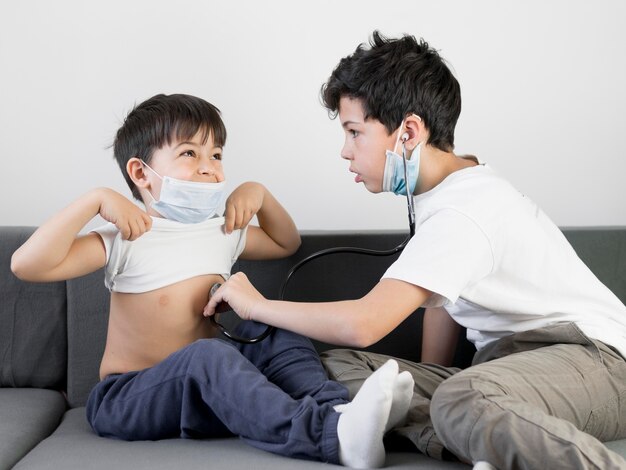
Kawasaki Disease typically affects children under five, mainly during the spring and summer months. If not diagnosed early, it can lead to serious heart issues. While the exact cause is still unclear, there are several theories. It’s not contagious, but it’s thought to occur due to viruses, bacteria, low immunity, environmental factors, or genetic predisposition.
Also known as Mucocutaneous Lymph Node Syndrome, Kawasaki Disease affects the skin, lymph nodes, and mucous membranes in the mouth, throat, and nose. Children under six months are usually not affected. It mostly impacts kids over six months old, causing inflammation of the arteries, particularly the coronary arteries, which supply blood to the heart muscle. Most children recover completely with treatment, and recurrence is rare.
Potential Causes of Kawasaki Disease:
While the exact cause of Kawasaki Disease remains unknown, several theories exist:
– A special virus may cause infection in the arteries, especially near the heart.
– Low immunity could make children more susceptible to the disease.
– Certain bacterial infections might trigger it.
– Environmental factors like dust and pollution could play a role.
– Genetics might increase the likelihood of developing Kawasaki Disease.
– Inflammation of the arteries throughout the body could be a factor.
– Autoimmune disorders causing the body to attack its own tissues might contribute.
Symptoms of Kawasaki Disease:
Kawasaki Disease causes inflammation, especially in heart arteries of children under five. Symptoms develop in phases:
The First Phase:
– High fever above 102.2°F lasting more than five days.
– Red or pink eyes without thick discharge.
– Skin and genital rashes.
– “Strawberry” colored tongue.
– Swollen, cracked, and red lips.
– Red palms and soles.
– Swollen lymph nodes in the neck.
– Irritability in children.
The Second Phase:
– Skin peeling on the hands, fingers, feet, and toes.
– Frequent diarrhea and vomiting.
– Abdominal pain.
– Joint pain in young children.
The Third Phase:
– Begins around 22 days after onset, lasting up to 60 days.
– Symptoms gradually lessen unless complications arise.
– Energy levels start to recover.
Treatment of Kawasaki Disease:
Immediate treatment is crucial to prevent heart damage. Although there is no definitive test for Kawasaki Disease, diagnosis is based on symptoms and may involve various lab tests:
– Fever for more than five days.
– Skin rashes.
– Red, swollen eyes.
– Red palms and heels.
– Enlarged neck lymph nodes.
Doctors might request the following tests for confirmation:
– Blood Test: Measures platelet count, which is elevated in KD.
– Urine Test: Rules out other conditions.
– Echocardiogram: Assesses heart pumping and coronary artery abnormalities.
– Electrocardiogram (ECG): Monitors heart rhythm.
– C-reactive Protein Test: Indicates inflammation levels.
– Albumin Test: Checks albumin levels, which are low in KD.
– Sodium Test: Measures sodium levels, typically low in KD.
Treatment includes:
Initial Phase:
– Aspirin Therapy: To prevent blood clots.
– Intravenous Immunoglobulin Therapy: Reduces risk of coronary aneurysms.
– Corticosteroids & TNF Inhibitors: Used if other treatments are ineffective.
– Fluids: To prevent dehydration.
Final Phase:
– Continued aspirin therapy for coronary artery aneurysms.
– Ongoing heart monitoring.
– Referral to a pediatric cardiologist for persistent heart issues.
– Anticoagulant medications to prevent blood clots.
– Coronary artery angioplasty and stent placement if necessary.
Prevention of Kawasaki Disease:
Prompt treatment upon symptom detection is the best preventive measure, although no concrete prevention method exists. Parents should monitor symptoms closely and maintain proper hygiene and cleanliness to minimize infection risks. During winter, extra care is advised due to higher disease incidence. Immediate medical attention is essential if a fever persists beyond three days, as early intervention is critical for managing Kawasaki Disease and preventing serious heart complications.